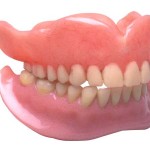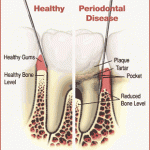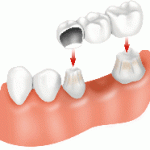A nor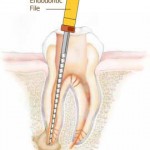 mal tooth will be symptom free and respond normally to pulp vitality test ( a test where the dentist applies small amount of electric current and you will feel a sharp pain if your tooth is alive) Continue reading
mal tooth will be symptom free and respond normally to pulp vitality test ( a test where the dentist applies small amount of electric current and you will feel a sharp pain if your tooth is alive) Continue reading
Monthly Archives: April 2011
Aftercare for Immediate Dentures
What is an Immediate Denture?

An immediate denture is “a complete denture or removable partial denture issued immediately after an extractionâ€. Patient may have their teeth extracted due to caries, severe periodontal disease or for esthetic purpose. An impression is taken prior to the extraction, sent to the lab and constructed according to the patient’s cast of natural teeth. It has great advantages as the patient’s appearance is maintained with no edentulous period. Circumoral support, muscle tone, occlusion, jaw relationship, face shape and face height can be maintained. Speech and mastication is rarely affected and nutrition can be maintained sufficiently. Patient has a better social interaction with others.  As there is no try-in done beforehand, esthetics may not be satisfactory and patient may not feel comfortable with the resulting appearance and fit on the day the immediate denture is inserted. They are contraindicated in patients with poor general health, postirradiation of the head and neck regions, systemic conditions that affect healing or blood clotting. Uncooperative patients who fail to understand the demands and limitations of an immediate denture, fail to carry out proper oral hygiene measures will compromise the health of the remaining natural teeth and oral tissues. Continue reading
Alternatives to Root Canals
Root canal treatment can be avoided and some other alternative procedures can be done to maintain pulp vitality if:
(1)Â Â Â The pulp should have symptoms of reversible pulpitis ( application of hot, cold stimulus will cause sharp pain for 10-15 seconds but resolves upon removal)
(2)   No periradicular disease is shown in radiograph ( no radiolucency/transparency around the roots)
(3)Â Â Â Tooth of interest should respond to pulp testing (to test for whether your tooth is still alive)
Advantages and Disadvantages of Dental Bridges
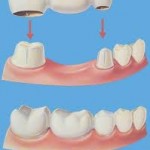 Having a missing tooth and worried about presence of a gap between your teeth which disrupts your daily social life and compromises your appearance. Worry less as dental bridges offer a great solution by closing the gaps. A false tooth is held in the open space at the gum line by attaching it to teeth on either side of the missing tooth. If several teeth are missing, artificial teeth are glued together and attached to adjacent real teeth. Dental implants and removable partial denture are other options available to replace missing tooth. Likewise other dental procedures, dental bridges have its advantages and disadvantages as well. Continue reading
Having a missing tooth and worried about presence of a gap between your teeth which disrupts your daily social life and compromises your appearance. Worry less as dental bridges offer a great solution by closing the gaps. A false tooth is held in the open space at the gum line by attaching it to teeth on either side of the missing tooth. If several teeth are missing, artificial teeth are glued together and attached to adjacent real teeth. Dental implants and removable partial denture are other options available to replace missing tooth. Likewise other dental procedures, dental bridges have its advantages and disadvantages as well. Continue reading
Top 5 Dental Problems in Toddlers You Ought To Know
 Children’s first baby tooth would erupt at the age of 5-6 months. Some babies differ by six months to a year and it is normal. There are some dental problems in toddlers which many of us should take note for a developing child. Continue reading
Children’s first baby tooth would erupt at the age of 5-6 months. Some babies differ by six months to a year and it is normal. There are some dental problems in toddlers which many of us should take note for a developing child. Continue reading
About Tooth Extractions

Tooth extraction is the permanent removal of a tooth from its bony socket. For most people, it is not a very pleasant experience. Some people even go through great lengths to avoid it, when in fact, it is actually just a minor procedure that rarely causes many complications.
Continue reading
What to Eat After Having My Teeth Extracted
Before any tooth extraction, anesthesia will be given to the patient by the dentist to numb the area. The anesthesia usually lasts for a few hours, depending on what type of anesthesia the patient is given. Because of this, it is important for the patient to avoid hot food because the patient will not feel the burn if the food is too hot. For the same reason, the patient is also not allowed to take hard, chewy food, because the patient will not realize it even when he/she accidentally bites on his/her own lips or other soft tissues. Continue reading
How to Care for New Dentures
It is common to feel weird or uncomfortable with new dentures in your mouth especially for those who never had any dentures before. Your dentist might extend the denture base so that the newly fabricated denture will be more retentive . You will feel uncomfortable even though it might be a small change compared to your old denture. Certain amount of perseverance is needed as it takes time for you to get used to your new dentures. Continue reading
Diabetes and Gum Disease
What is gum disease?
Gum disease is an infection in the gum tissues and bone that keep your teeth in place. There are two types of gum disease, gingivitis and periodontitis.
- Gingivitis is the inflammation of gums caused by bacteria and plaque. This form of gum disease does not include any loss of bone and tissue that hold teeth in place. It is reversible. If left untreated, it can progress to a more severe form, periodontitis, which is irreversible.
- Periodontitis is the inflammation around the tooth. Gums pull away from teeth and form spaces, which become infected as bacteria and plaque spreads. Eventually, the bones, gums and tissue that support the teeth are destroyed. As a result, teeth become loose. Continue reading
How Long Do Dental Bridges Last?
There is no exact figure regarding the success rate of crown and bridges. According to some surveys, small conventional bridges can last around 20-40 years where as larger conventional bridges can last 10-30 years. For adhesive bridges, they last approximately 10-20 years or more. Evidences to prove the success rate for adhesive bridges are not very strong due to they are being introduced long time after conventional rate. Success rate of bridges depend strongly on the maintenance by the patient him/herself. Continue reading

